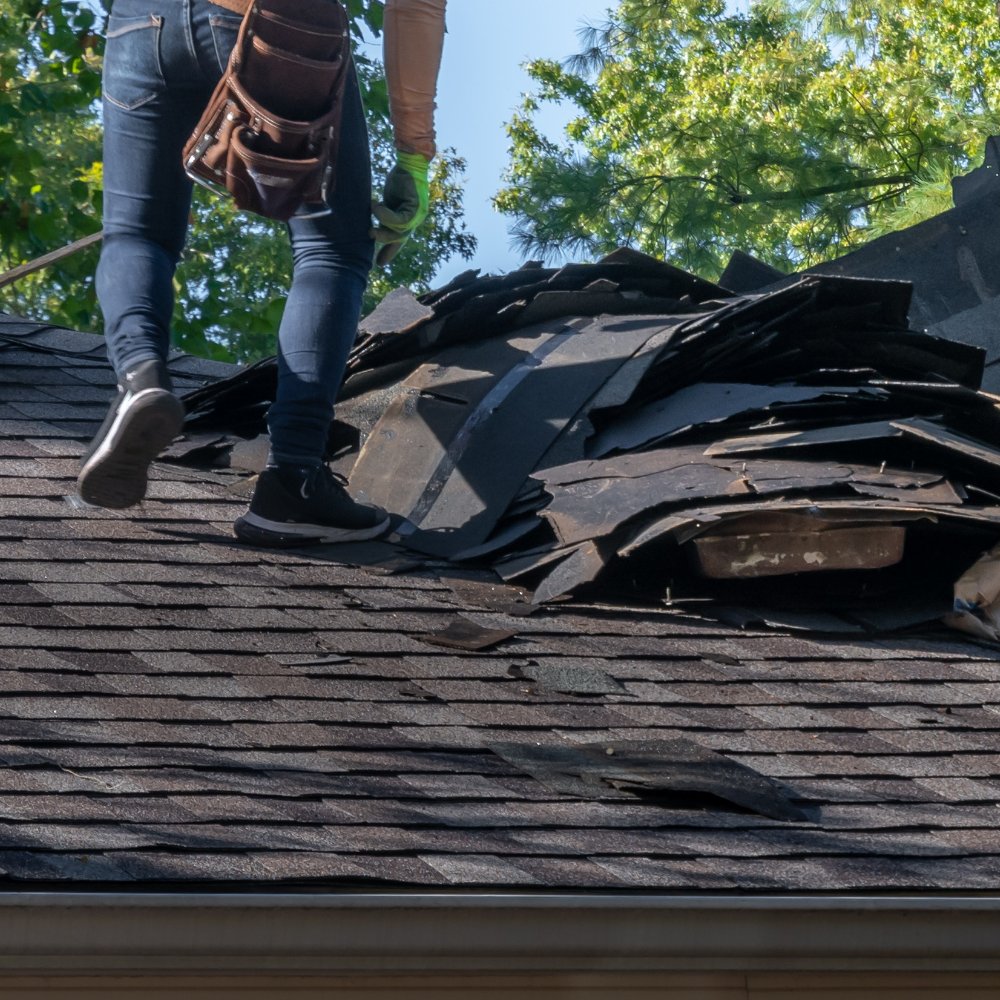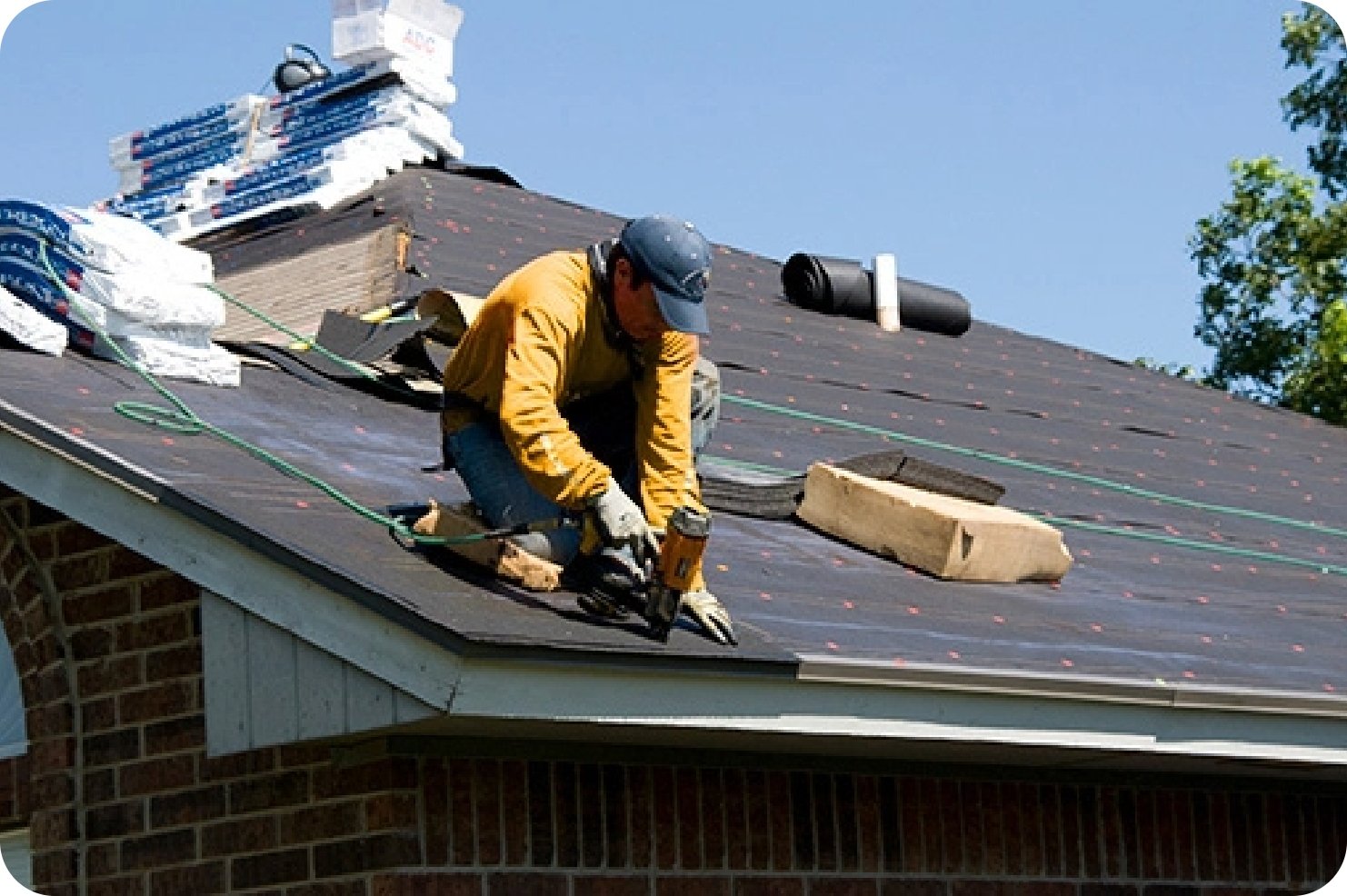Seasonal Roof Repair Work Checklist: Prepare Your Roof for every single Weather Condition
As a property owner, you know the importance of shielding your financial investment, and your roofing system plays a vital function in that. Each period brings unique obstacles that can influence its integrity. By following a seasonal roofing system repair service list, you can remain in advance of potential problems. From winter ice dams to summertime warmth, each step is substantial. Let's explore how proper upkeep can secure your home and extend your roof covering's life-span.
Inspecting Your Roof Covering for Winter Season Readiness
As wintertime strategies, it's vital to check your roofing to validate it can endure rough weather. When snow and ice build up, Start by checking for missing out on or harmed shingles; also a tiny issue can lead to substantial leaks. Next, check out the flashing around chimneys and vents-- this area is usually susceptible to water breach.
Do not forget to look for indications of sagging or uneven surfaces, as these might indicate architectural issues. Additionally, confirm your rain gutters are clear; clogged rain gutters can bring about ice dams that damage your roof.
 roof repair
roof repair
Spring Cleaning: Cleaning Debris and Monitoring for Damages
Once winter season's grasp launches, it's time to tackle spring cleaning on your roofing by eliminating debris and looking for any kind of damages. Beginning by evaluating your roof for fallen branches, leaves, and various other particles that can catch wetness and create rot. A clean roof covering advertises much better water drainage and protects against mold growth.
Following, order a durable ladder and thoroughly check tiles for cracks or missing out on items. Focus on locations around chimneys and vents, as these places are vulnerable to leaks. Do not fail to remember to examine your seamless gutters, guaranteeing they're cost-free from clogs that could cause water merging.
While you're up there, look for indications of wear, like corrosion on steel flashing or loose seals around skylights. Resolving them now can conserve you from costly repair services later on if you identify any kind of issues. A little springtime cleaning goes a long means in preserving your roofing's stability.
Summer Season Warm: Examining Your Roof Covering for Heat-Related Issues
As summer warm intensifies, it's necessary to examine your roofing system for heat-related issues. Inspect for any shingle damages, seek indications of heat buckling, and evaluate just how well your roof aerates. Taking these steps currently can stop bigger problems down the road.
Evaluate for Shingle Damages
 roof repair
roof repair
Inspect for Heat Buckling
Warm fastening is a common problem that can arise during the scorching summertime months, and it's important to inspect for it on your roofing. As temperatures rise, roof covering materials, specifically asphalt tiles, can expand and agreement. This movement can bring about bending, producing undesirable lumps or fractures. Begin by evaluating your roof visually; search for any kind of irregular surfaces or lifted edges. Pay unique interest to areas around vents and smokeshafts, where fastening is more most likely to occur. If you identify any kind of signs of warm fastening, it's crucial to address them without delay to stop further damage. Consider consulting a professional if you're uncertain concerning the degree of the problem or exactly how to fix it effectively.
Examine Roofing System Air Flow Efficiency
After looking for warmth buckling, it is very important to assess your roofing's ventilation performance. Proper air flow assists control temperature and dampness, preventing damage from too much heat. Begin by checking your vents; ensure they're not blocked by debris roof repair gainesville ga or insulation. Try to find indicators of poor air movement, like heat build-up in your attic or distorted roofing products. If your soffit vents and ridge vents work together effectively, you may also desire to inspect. If your home really feels stale and overheated, consider upgrading to much more efficient ventilation systems, like powered attic fans or extra soffit vents. Bear in mind, maintaining good air flow not only extends your roof's life yet also enhances your home's overall power effectiveness, ensuring comfort during those hot summer months.
Rainy Season Readiness: Making Certain Proper Drain
As the stormy period techniques, you need to ensure your roof's drain system is ready to handle hefty downpours. Start by inspecting your gutters and downspouts, and make certain they're free from particles. Do not forget to inspect the blinking and seals to protect against leakages and water damage.
Inspect Rain Gutters and Downspouts
Beginning by inspecting for any type of noticeable debris, like branches or fallen leaves, that can obstruct the flow of water. Next, take a look at the downspouts for obstructions or damages; a blocked downspout can create water to overflow, potentially damaging your roofing system and foundation. If you identify any problems, resolve them immediately to prevent expensive repair work.
Clean Roofing Surface Area Particles
Use a roofing rake or mop to gently remove debris, being careful not to damage the roof shingles. After cleansing, check your roof covering after heavy rains to spot any possible problems early. Maintaining your roof covering clear of particles is essential for preventing costly repair services down the line.
Inspect Flashing and Seals
After clearing your roofing of debris, take a better look at the blinking and seals around smokeshafts, vents, and skylights. These locations are vital for avoiding leakages throughout the rainy season. Inspect the blinking for any indicators of corrosion, cracks, or voids. If you discover any kind of damage, it is very important to fix or replace it promptly. Next off, inspect the seals; they must be intact and tight. Seek any type of peeling or worn-out areas that may enable water to leak in. Take into consideration resealing them with a high-quality roof covering sealant if you discover any type of jeopardized seals. Making sure these elements are in good problem will certainly aid preserve proper water drainage and shield your home from water damages throughout hefty rainfall.
Checking and Preserving Roofing System Seals and Flashing
While it could seem very easy to neglect, examining and maintaining roofing system seals and flashing is necessary for avoiding leaks and water damages. Start by evaluating the seals around skylights, vents, and smokeshafts. Look for any fractures, spaces, or indicators of wear. If you spot any kind of concerns, it's best to reseal them with appropriate roof covering sealant to guarantee a limited fit.
Next, check out the blinking, which directs water away from crucial areas. Check for corrosion, loose sections, or curved sides.
Last but not least, do not forget to clean up off any type of particles that might block the seals or flashing. Maintaining these components healthy will aid secure your roof against the elements and prolong its life-span.
Seamless Gutter Maintenance: Maintaining Water Flowing Smoothly
Since your gutters play an important role in directing rain away from https://hermesnews.net/ll-roofing-delivering-excellence-in-roofing-solutions-for-gainesville-and-beyond/ your home, normal upkeep is vital for avoiding water damage and structure problems. A stopped up seamless gutter can lead to water overflow, which may damage your roofing system and exterior siding.
Next, examine for any kind of signs of rust, openings, or sagging sections. If you discover any kind of damage, fixing or replace the damaged parts promptly. Validate downspouts are guiding water at the very least six feet away from your foundation. If essential., think about adding extensions.
Finally, examine that your rain gutters are appropriately sloped, ideally a quarter inch for every 10 feet. This slope guarantees water moves efficiently towards the downspouts. Regular maintenance will keep your rain gutters functioning effectively and safeguard your home from expensive fixings.
Setting Up Specialist Examinations for Comprehensive Care
Frequently organizing professional inspections is vital for maintaining your roofing system's honesty. This timing permits you to address any damages triggered by winter weather or summertime tornados.
Throughout examinations, experts will certainly assess shingles, blinking, and air flow, making certain whatever's in leading form. They'll additionally inspect for indicators of wear, leakages, or mold, which you may neglect. Arranging these examinations not only expands your roofing system's life expectancy yet additionally offers you assurance.
If you're unsure regarding the condition of your roofing, don't hesitate to call an expert. Investing in these examinations now can save you a great deal later on. Prioritize your roof's wellness, and you'll be well-prepared for whatever weather comes your way.
Often Asked Inquiries
Just how Frequently Should I Examine My Roofing Throughout the Year?
You ought to check your roofing system a minimum of two times a year, ideally in springtime and fall. After severe weather condition occasions, check for damage as well. Routine assessments help you capture problems early and conserve money on repair work.
What Indications Indicate I Need a Roofing System Replacement As Opposed To Repair Work?
 roof repair
roof repair
Can I Do Roof Covering Fixes Myself, or Should I Employ a Professional?
You can perform minor roofing system repair work yourself if you fit with elevations and basic tools, however working with an expert warranties safety and appropriate work. Do not risk damage; it could be worth the investment for comfort.
What Are the Ideal Materials for Roofing System Fixes in Different Climates?
For various environments, you'll want products like asphalt tiles for modest locations, metal roof covering for extremes, and clay ceramic tiles for hot regions. Constantly take into consideration local weather patterns to ensure your roofing system holds up against the elements successfully.
How Do Roofing System Guarantees Impact Seasonal Upkeep Responsibilities?
Roof service warranties often specify maintenance obligations, so you'll need to evaluate the terms. If you don't keep your roofing system as needed, you may nullify the guarantee, leaving you responsible for expensive repair services.
Seasonal Roof Repair Service Checklist: Prepare Your Roof for Every Weather
As soon as winter months's grasp releases, it's time to deal with springtime cleansing on your roofing by clearing away debris and inspecting for any type of damages. Inspect for any tile damage, look for signs of warm buckling, and review just how well your roof ventilates. If you identify any problems, take into consideration getting in touch with an expert for repair work to maintain your roof covering in top shape and safeguard your home from possible water damage.
While it might appear very easy to ignore, examining and maintaining roof seals and flashing is important for stopping leaks and water damage.